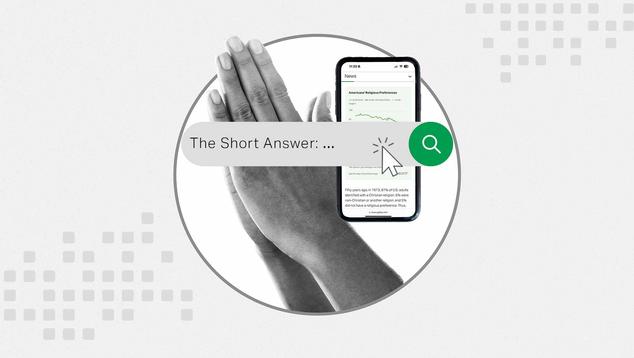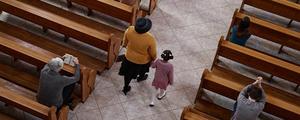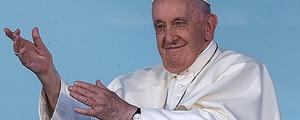WASHINGTON, D.C. -- The vast majority of Americans have a religious preference -- predominantly a Christian one -- though that percentage is declining. At the same time, much smaller proportions of Americans say religion is "very important" to them, that they belong to a church or that they regularly attend religious services.
Most Americans Identify With a Religion
According to an average of all 2023 Gallup polling, about three in four Americans said they identify with a specific religious faith. By far the largest proportion, 68%, identify with a Christian religion, including 33% who are Protestant, 22% Catholic and 13% who identify with another Christian religion or simply as a "Christian."
Seven percent identify with a non-Christian religion, including 2% who are Jewish, 1% Muslim and 1% Buddhist, among others.
Twenty-two percent of Americans said they have no religious preference, and 3% did not answer the question.
Fifty years ago, in 1973, 87% of U.S. adults identified with a Christian religion, 6% were non-Christian or another religion, and 5% did not have a religious preference. Thus, much of the change in the U.S. has been a shift away from Christian religions to no religion at all.
Religion 'Very Important' to About Half of Americans
Forty-five percent of Americans say religion is "very important" in their life, with another 26% saying it is "fairly important" and 28% saying it's "not very important."
When Gallup first asked this question in 1965, 70% said religion was very important. That fell to 52% in a 1978 survey, but the percentage ticked up to nearly 60% between 1990 and 2005. Over the past 20 years, a declining share of Americans have said religion is important, dropping below 50% for the first time in 2019.
Church Attendance Is Declining
Even though most Americans have a religious preference and say religion is at least fairly important to them, much smaller proportions regularly attend religious services.
Asked whether they personally had attended church, synagogue, mosque or temple in the past seven days, an average of 32% of U.S. adults in 2023 reported they had done so, either in person or virtually. In 2000, 44% had gone to church in the past seven days, and in 1958, 49% had.
The long-term decline in church attendance is linked to a drop in religious identification in general -- particularly for Protestant religions -- but also to decreasing weekly attendance among U.S. Catholics.
When describing their behavior more generally, 21% of Americans report they attend religious services "every week," with another 9% saying they do so "almost every week" and 11% saying they attend about once a month. That leaves the majority saying they "seldom" (26%) or "never" (31%) attend religious services.
Gallup trends on this measure of church attendance date back only to 1992, at which time 34% of U.S. adults said they attended church every week.
Steep Decline in U.S. Church Membership
Additionally, less than half of Americans, 45%, belong to a formal house of worship. Church membership has been below the majority level each of the past four years. When Gallup first asked the question in 1937, 73% were members of a church, and as recently as 1999, 70% were.
The decline in formal church membership has largely been driven by younger generations of Americans. Slightly more than one-third of U.S. young adults have no religious affiliation. Further, many young adults who do identify with a religion do not belong to a church. But even older adults who have a religious preference are less likely to belong to a church today than in the past.
To stay up to date with the latest Gallup News insights and updates, follow us on X.
Gallup measures religious attitudes and behaviors each year as part of its Gallup Poll Social Series.
Explore Gallup questions and trends about religion on Gallup's Topics A-Z: Religion page.
For more articles in the "Short Answer" series, visit Gallup's The Short Answer page.




